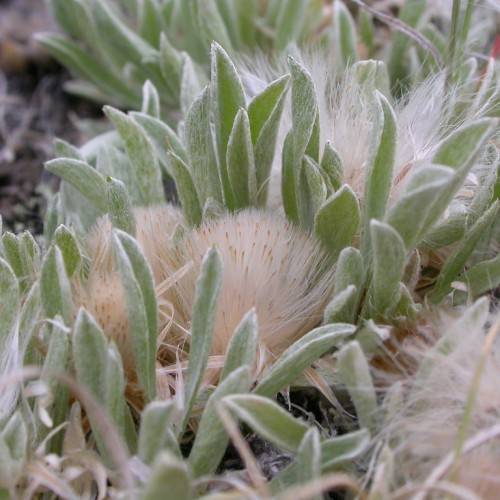
Low Pussytoes
Antennaria dimorpha
Also Known As - Two Form PussytoesWatering:
Minimal
Hardiness Zone:
Sun:
full sun,part shade
Growth Rate:
Low
Drought Tolerant:
Yes
Salt Tolerant:
Yes
Care Level:
Medium
watering
Tall Pussytoes require consistently moist soil in order to thrive. Water them regularly, approximately 1-2 times per week, and ensure that all excess moisture is able to drain properly. If the soil is allowed to dry out too much, the plants may become damaged or die. During their active growing season, which is typically during the spring and summer months, increase watering to 2-3 times per week. Be aware that during excessive heat and sunlight, the soil can dry out quickly, so slightly increased watering may be necessary. During the cooler and darker months, usually during the fall and winter, reduce the frequency of watering. Allow the soil to just dry out between waterings as opposed to completely drying out to maintain optimal soil moisture levels.
sunlight
Tall Pussytoes, which botanically is referred to as Antennaria anaphaloides, is a species of perennial plant that is native to dry and sandy landscapes in North America. As a sun-loving species, the best place to site your Tall Pussytoes in the garden is in an area that receives up to 6 or 8 hours of direct sunlight each day. If your region has particularly hot summers, it will appreciate some light afternoon shade to escape the summer heat, allowing the soil it is planted in to remain cool. Too much shade, however, will reduce flowering and can lead to leggy growth.
pruning
Tall Pussytoes (Antennaria anaphaloides) should be pruned in early to mid-spring each year. Pruning should be minimal and shallow and consist only of removing dead or damaged stems. This species of plant typically responds well to shape pruning, so any stems that are too tall, too wide, or are warped can be pruned lightly. The goal should be to keep the plant the same size and shape, rather than over-pruning to reduce size or shape. Whenever possible, pruning tools should be sterilized before and after use.
